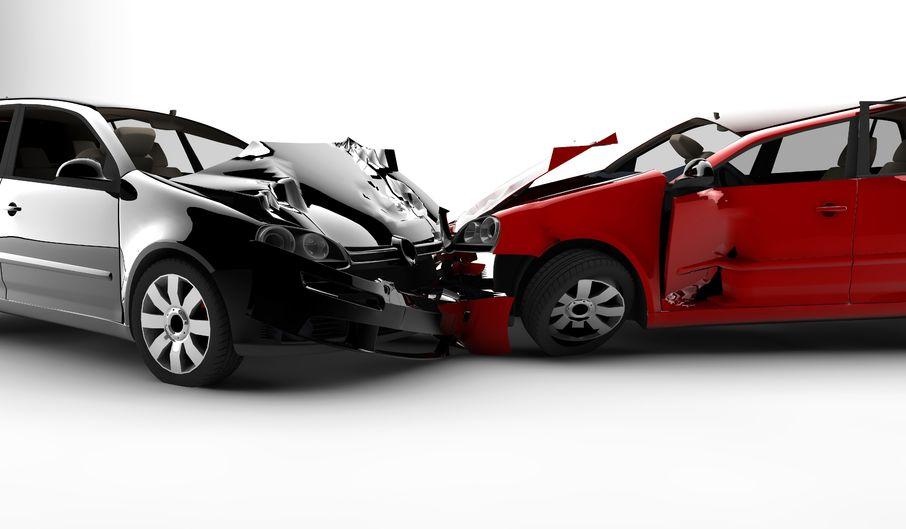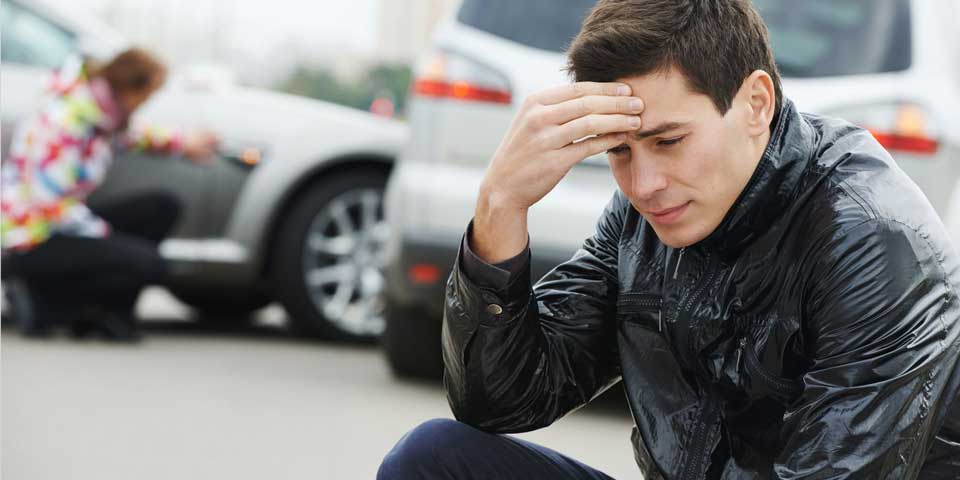California law requires every vehicle driver to stay at the scene of an accident or collision if someone is hurt or property is damaged under Vehicle Code sections 20002 and 20003 (sometimes called “VC20002” or “VC20003”). Hitting a parked car or a person and then driving off without leaving your information would most likely be a crime of hit and run.
Hit and run cases where are only property is damaged is usually charged as a misdemeanor crime. If people are injured or killed, the hit and run is generally charged as a felony crime.
{index}
Stopping Requirements Generally
Importantly, it does not matter if you are not at fault for causing an accident or an injury, California law requires you to stay at the scene of an accident and identify yourself.
If only property is damaged, you must then exchange or leave the following information under Vehicle Code section 20002:
- Name and address of the driver;
- Name and address of the owner of the vehicle registration; and
- If requested, the driver must show a copy of their drivers license or valid identification of the owner must be shown.
Accidents resulting in property damage with no injuries is common when people hit parked cars and the owner of the parked car cannot be found.
If the property owner is not present, a note detailing the accident must be left in a clear place with the name and address of the driver and vehicle owner. Afterward, without delay, the driver must notify the local police of the accident to avoid a charge of hit and run.
If the collision has resulted in personal injury or death, the drivers must leave the following information to the person that has been hit or occupants of the other vehicle under Vehicle Code section 20003:
- Driver’s name;
- Home address of driver;
- The names and current home address of anyone inside the driver’s car that has been injured;
- The registration number of driver’s car; and
- Name and current home address of the vehicle owner.
Impacts on Insurance and License
Not stopping and leaving the scene of an accident or collision is a misdemeanor criminal violation that is punishable by a jail sentence of up to six months and/or a fine not exceeding $1,000. Two points are also added to your California driving record with the Department of Motor Vehicles (DMV), which will cause your car insurance rates to increase significantly.In accidents, where no property or persons are injured, California Vehicle Code section 16025 requires drivers of vehicles involved with collisions to exchange:
- Driver’s name,
- Current home address,
- Driver’s license information,
- Vehicle Identification number,
- Current home address of the registered owner of the vehicle, and
- Evidence of financial responsibility and/or vehicle insurance information.
Failure to exchange information in violation of Vehicle Code section 16025 is an infraction and punishable by a fine of up to $250.
Criminal Penalties for a Hit and Run
The maximum penalties for misdemeanor hit and run is six months in county jail and a fine up to $1,000. Vehicle Code section 16025 can also be charged if you fail to exchange information after a vehicle accident.
In addition to criminal punishments, two points can be placed onto your DMV driving history that will increase your car insurance costs.
| Code Section | Vehicle Code, § 20002 |
| Violation Type | Misdemeanor |
| Custody Time | Up to 6 months in county jail. |
| Other Possible Penalties | Fine of up to $1,000. |
| Code Section | Vehicle Code, § 20003 |
| Violation Type | Felony |
| Custody Time | Non-Serious Injury: Up to 1 year in jail or prison. Serious Injury or Death: 90 days to 1 year in jail, or 2 to 4 years in prison. |
| Other Possible Penalties | Fine no greater than $10,000. |
| Code Section | Penal Code, § 192(c)(2) |
| Violation Type | Misdemeanor |
| Custody Time | Up to 1 year in jail |
| Code Section | Penal Code, § 192(c)(1) |
| Violation Type | Can be charged as a misdemeanor or a felony. |
| Custody Time | Up to 1 year in jail if charged as a misdemeanor, or 2 to 6 years in prison if charged as a felony. |
| Code Section | Vehicle Code, § 23152 |
| Violation Type | Misdemeanor |
| Custody Time | Up to 6 months county jail. |
| Other Possible Penalties |
|
| Code Section | Vehicle Code, § 23153 |
| Violation Type | Can be charged as a misdemeanor or a felony, depending on the facts. |
| Custody Time | Anywhere from 5 days in jail to 4 years in prison, depending on whether the charge is a misdemeanor or felony and the number of injured people. |
| Other Possible Penalties |
|
As you can see from the tables above, additional penalties and criminal charges for injuries to others parties, DUIs, being an unlicensed drivers, drunk driving or having a suspended licensed can be added onto criminal charges of a hit and run violation. Besides criminal charges and fines, restitution and compensation may be paid to injured people or damaged property.
Common Examples Involving a Hit and Run

Criminal defense attorneys regularly encounter the following scenarios:
- A person driving too fast loses control of their car and hits a person, building, or car;
- A person under the influence of drugs or alcohol hits a person, building, or parked car;
- A person is speaking on their cell phone or text messaging someone and hits a person, tree, telephone pole, or parked car; or
- A person is driving their vehicle and, for whatever reason, hits someone’s personal property. The most common property that is hit by cars include: homes, fences, pets, plants, street signs, and shrubs and lawns.
Defending a Hit and Run Charge
All criminal defenses should be tailored to the facts of your specific case. Speak to criminal defense attorney Long Beach Criminal Lawyer at 562-304-5121 to discuss your case, learn your defenses and determine your options.
The common defenses against a charge of hit and run are:
- There were no witnesses of you driving the vehicle during the alleged hit and run. The police, witnesses, or prosecutors then use weak circumstantial evidence to identify and arrest you.
- Someone else was driving your vehicle and caused the accident.
- No injury or damage was caused to either property or another person. Damage only to your car is not enough to support a charge of hit and run.
- You did not know you hit someone. It is often hard to hear or know of damage from low-speed collisions in today’s modern cars, due to soft plastic bumpers and strong sound proofing.
- You could not reasonably stop at the scene of the incident because it was unsafe and you were not able to locate the other driver.
- You did not wait unreasonably long before calling the local police department. Or, the police arrived before you had a chance to call.
- You did not stay at the scene because you needed medical help right away.
- You did not stay because the other driver was hostile, aggressive, and threatening to attack you.
Hit and Run Statute of Limitations
The statute of limitations, commonly known as the “expiry date” of a hit and run depends on the potential charge that can be applied to you. Prosecutors must file a charge against someone before the statute of limitations has passed.
If prosecutor’s file a charge after the statute of limitations and cannot prove it is within the statute of limitations, you may challenge the action as being too late and acquittal of the charge is required.
For misdemeanor crimes, the statute of limitations is one year from the alleged commission of the crime. Felony charges have a statute of limitations of three yearsFootnote from the date of the alleged commission of the crime, unless otherwise specified.
If the crime can be either a felony or a misdemeanor (known as a “wobbler”) the longer felony statute of limitations applies.
What to Do When You’re Uncertain if You’ve Had a Hit and Run
If you think you might have been involved in a hit-and-run, only contact the police AFTER you have spoken to a qualified criminal defense attorney and understand your legal rights. Making a mistake now could cost you your freedom.
Understandably, many people who think they have committed a hit and run want to contact the police in order to resolve the situation immediately and get things “off their chest.” Speaking to the police without an attorney is never a good idea, unless you have considered all your options and have a plan to protect your reputation and freedom.
A criminal defense attorney can help you with the following:
- Determining the risks and benefits of contacting the police,
- Determining the probable criminal charge and possible penalties,
- Exercising your legal rights to avoid criminal charges or greater penalties,
- Preserve and maintain evidence to prove your innocence or strengthen your defense,
- Help negotiate a civil compromise or settlement with injured parties to dismiss criminal charges against you, and
- Speak with police investigators to present your side of the incident and hopefully avoid further investigation of your case.
Let Us Help
In every hit and run case, the facts of your case matter. Very small details often change the outcome of the charges and potential defenses in your case.
It is always a good idea to speak to a qualified and caring criminal defense attorney to give yourself the greatest protection possible. If you or someone you know is involved in a hit and run accident, DUI, or other related vehicular crime call Los Angeles Criminal Defense Attorney Long Beach Criminal Lawyer at 562-304-5121 for honest and effective legal advice.
References
-
See Cal. Dept. of Motor Vehs., Vehicle Code Violations used in Negligent Operator Counts (2011).
-
People v. Le (2000) 82 Cal.App.4th 1352.
-
Pen. Code, § 802, subd. (a).
-
Pen. Code, §§ 799–801.





